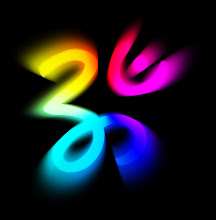The Google PageRank, algorithm and its working
Introduction
Page Rank is considered very important by many Search Engine Optimisation (SEO) experts, though it does not place an important role in Google search results. But, still having a good page rank determines the importance of a link or web page. Google too gives the Page rank a Preference when multiple factors are considered.
Page Rank is one of the methods Google uses to determine a page’s relevance or importance. It is only one part of the story when it comes to the Google listing, but the other aspects are discussed elsewhere (and are ever changing) though Page Rank says nothing about the content or size of a page.
Google PageRank is displayed in Google Toolbar ranging from 0 – 10 whereas the actual Page rank differs in Floating point numbers shown below.
| Google Toolbar PageRank | Real PageRank |
| 0 | 0 – 10 |
| 1 | 10 – 100 |
| 2 | 100 – 1,000 |
| 3 | 1,000 – 10,000 |
| 4 | 10,000 – 100,000 |
| 5 | 100,000 – 1,000,000 |
and so on…
The Page Rank changes every time Google does its indexing.It is not convenient to show the Page Rank in large digits and to update it frequently. So, Google Page Rank and Back links are updated in the Toolbar mostly in a time span of 1-3 months.
So, what is PageRank?
- PageRank is only one of numerous methods Google uses to determine a page’s relevance or importance.
- PageRank evaluates two things: how many links there are to a web page from other pages, and the quality of the linking sites.
- The Google PageRank algorithm it’s established PR across all of the outbound links. Put differently, if you had a web page with a PR6 and had 1 link on it, the site linked to would get a fair amount of PR value. But, if you had 40 links on that page, each individual link would only get a fraction of the value.
- From this, we could conclude that a link from a page with P̸ and 5 outbound links is worth more than a link from a page with P̼ and 100 outbound links. The PageRank of a page that links to yours is important but the number of links on that page is also important. The more links there are on a page, the less PageRank value your page will receive from it.
How the PageRank is calculated
- PageRank is based on incoming links, but not just on the number of them – relevance and quality are important (in terms of the PageRank of sites, which link to a given site).
- It often takes two full monthly updates for all of your incoming links to be discovered, counted, calculated and displayed as backlinks
- PageRank does not rank web sites as a whole, but is determined for each page individually.
- Google calculates pages PRs permanently, but we see the update once every few months .
- PR(A) = (1-d) + d [PR(t1)/C(t1) + … + PR(tn)/C(tn)]. This is the formula to calculate the PageRank (of Page A).
Lets make it simple to understand
- PR(͉) – Each page has a notion of its own self-importance.That’s PR for the first page
- PR(TN) – That’s PR of the Nth number of page.
- C(Tn) – Its the total outgoing links from a page. The count, or number, of outgoing links for page 1 is C(T1), C(Tn) for n number of pages.
- d – All these fractions of votes are added together but, to stop the other pages having too much influence, this total vote is “damped down” by multiplying it by 0.85 (the factor “d”).
- (1 – d) – The (1 – d) bit at the beginning is a bit of probability so the “sum of all web pages’ PageRanks will be one”: it adds in the bit lost by the d It also means that if a page has no links to it (no backlinks) even then it will still get a small PR of 0.15 (i.e. 1 – 0.85). (Aside: the Google paper says “the sum of all pages” but they mean the “the normalised sum” – otherwise known as “the average” to you and me.)
A detailed Explanation with examples for calculating pagerank is coming soon. So, get subscribed.
Important factors for PageRank
- Incoming Links from popular sites are important. If pages linking to you have a high PageRank then your page gains some part of their reputation.
- Site can be banned if it links to banned sites.Be extremely careful of any out-going links from your site. Don’t link to bad neighborhoods (link farms, banned sites, etc.) Google will penalize you for bad links so always check the PageRank of the sites you’re linking to from your site.
- Illegal activities will penalize your PageRank and possibly ban your site from Google.Hidden text, deceptive redirects, cloaking, automated link exchanges, or anything else against Google’s quality guidelines can ban your site from Google.
- Different pages from a site can have different Page Rank.Search engines crawl and index web pages not websites, that is why your page rank may vary from page to page within your website.
- Content is not taken into account when PageRank is calculated. Content is taken into account when you actually perform a search for specific search terms.
- Links marked with nofollow-attribute don’t contribute to Google PageRank.Google implemented a new value, “nofollow”, for the rel attribute of HTML link and anchor elements, so that website builders and bloggers can make links that Google will not consider for the purposes of PageRank — they are links that no longer constitute a “vote” in the PageRank system.
- Bad incoming links don’t have impact on Page Rank.Where the links come from doesn’t matter. Sites are not penalized because of where the links come from
- Google penalizes link farms.Google is only concerned with pages of over 100 outgoing links. Google considers overly linked pages to be link farms, and they are penalized as such.
List of PageRank Tools
We have got our own PageRank calculator which shows the current PageRank of your site with its Alexa Rank and Average backlinks from most popular search Engines.
Google PageRank Inspector
Google PageRank inspector is PHP scripts that can seek all of your website, include out linked page or not, and display Pagerank value for each of your website pages.
Google PageRank inspector is PHP scripts that can seek all of your website, include out linked page or not, and display Pagerank value for each of your website pages.
PageRank Decoder
This little tool is not too much different then a tool that tells you your PageRank, however it allows you to organize your sites (with PR information) in a visual network and then correspondingly connect them with arrows. You can move them around like cards, connect them or not, and even delete them by throwing them in a trash can.
This little tool is not too much different then a tool that tells you your PageRank, however it allows you to organize your sites (with PR information) in a visual network and then correspondingly connect them with arrows. You can move them around like cards, connect them or not, and even delete them by throwing them in a trash can.









0 Reactions to this Posts
What you think about this Post? Let us know
Please DO NOT Spam